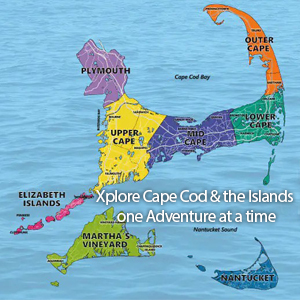Museum
Nantucket Whaling Museum
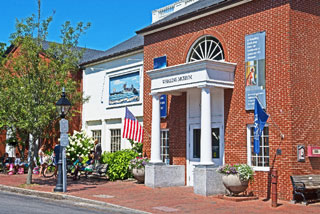 What to see at the Nantucket Whaling Museum
What to see at the Nantucket Whaling Museum
If you find yourself on Nantucket, be sure to visit the Nantucket Whaling Museum for a look at the fascinating history of the island’s first booming industry and to learn more about the industry that put Nantucket on the map.
History at the Nantucket Whaling Museum
The native Wampanooag people of Nantucket had been harvesting beached whales, called drift whales, for centuries before the arrival of Europeans. Once Europeans arrived on the island they took a more aggressive approach to harvesting the leviathans, one that led to an empire of wealth for the faraway island. Herman Mellville would later dub these hunters, “Quakers with a vengeance.”
Dangerous, bloody, and lucrative, the Nantucket whaling industry turned a small island into one of the busiest ports in the world. Located just steps away from the ferry terminal, the Nantucket Whaling Museum details the timeline of the whaling on Nantucket.
Nantucketeers took to whaling slowly, beginning with small boats near to shore. The boats were mostly crewed by men from the Wampanoag tribe. First, they hunted right whales that gathered to graze near the island’s coast from the fall to spring. The right whales were named as they were the ‘right’ whale to hunt, and would float after they were killed.
Once the whalers had exhausted the population of local whales, the islanders built larger boats and searched farther afield. The whalers moved on to the more oil-rich sperm whales found further offshore, which provided more of the sought-after oil and spermaceti.In the late 18th and early 19th centuries the small and remote island became the whaling capital of the world, sending ships around the world in pursuit of whales. 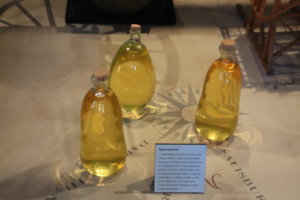
Author Nathaniel Philbrick notes that, “By the advent of the American Revolution, Nantucketeers had reached the verge of the Arctic Circle, the west coast of Africa, the east coast of South America and the Falkland Islands to the south.” As the ships began to head to the Pacific in the early 19th centuries the voyages began to last years, rather than months. With men away whaling for years at a time, women were left to raise children and run many of the island’s businesses. In an article for Smithsonian Magazine, Philbrick draws an interesting comparison between the often absent men of Nantucket and the transient nature of the male sperm whales they were hunting.
Notable Women at the Nantucket Whaling Museum
The Nantucket Whaling Museum documents many of these Notable Nantucket Women in its 2022 exhibit, “The Road from Abolition to Suffrage.” The exhibit features a range of women who ran businesses on Nantucket, were faith leaders, leaders in science, and advocates for the abolition of slavery and fought for women’s rights. These notable Nantucket women include: Mary Coffin Starbuck, who converted to Quakerism, took much of the island with her, and was the first recognized minister on Nantucket, Maria Mitchell, an astronomer who discovered a comet in 1847 and was an advocate for women in science, Anna Ring who in 1926 was the first woman in Nantucket and Massachuests to be elected as a Selectman, as well as many more influential 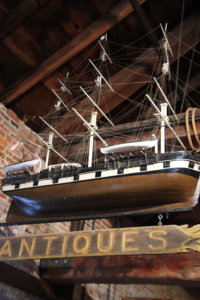 figures.
figures.
The Nantucket whaling industry was in decline by the 1850’s. New Bedford had surpassed Nantucket as the busiest whaling port in the country, and a fire in 1846 had devastated the island. The industry continued on its decline into the 20th century as the nation’s feelings towards whales shifted, yet the whaling industry shaped the evolution and character of Nantucket in a myriad of ways that can still be observed to this day.
The Nantucket Whaling Museum stewards this history and educates visitors about the heyday of the island’s whaling industry through interactive exhibits, interpretive programming, and a range of art and artifacts from the time period. This includes the recent additions of artifacts from Two Brothers, an ill-fated Nantucket whaleship that sank about 600 miles northwest of Honolulu and was discovered in 2011.
Exhibits at the Nantucket Whaling Museum
The Nantucket Whaling Museum includes permanent and rotating exhibits, nine galleries, a range of artifacts, works of art, and treasures spanning four centuries of the island’s history. Visitors can’t miss the shining Fresnel lens which glitters in the entryway to the Nantucket Whaling Museum.
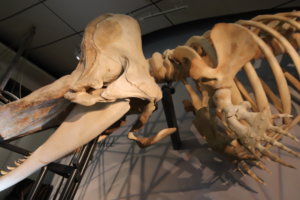 As visitors walk through the Nantucket Whaling Museum, they’re sure to enjoy the fascinating exhibits detailing the timeline of whaling and in concert the development of Nantucket. Gosnell Hall is unmissable with the looming skeleton of a sperm whale hanging from the ceiling, and features mock sections of notable whaling ships including the Essex and the Georgia.
As visitors walk through the Nantucket Whaling Museum, they’re sure to enjoy the fascinating exhibits detailing the timeline of whaling and in concert the development of Nantucket. Gosnell Hall is unmissable with the looming skeleton of a sperm whale hanging from the ceiling, and features mock sections of notable whaling ships including the Essex and the Georgia.
As you proceed through the museum you’ll spot the restored 1847 Hadwen & Barney Oil and Candle Factory, featuring the impressive two-story beam press used to extract oil. There’s also lots of fascinating information on the island’s other industries, from cranberries and wind powered grist mills to straw hat works and baskets woven by men stationed aboard light ships! 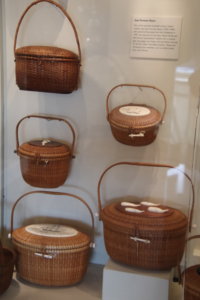
The exhibits of the Nantucket Whaling Museum also explore the way the whaling industry brought Nantucketers across the world. The Nantucket and the World exhibit explores the far-flung ports and seas the whaling ships reached, and a room is dedicated to the souvenirs the ships brought back from every corner of the globe. The museum also features an entire gallery of scrimshaw art, carved bones and teeth from whales.
Managed by the Nantucket Historical Association, the museum features a first-hand whaling narrative passed down from the museum’s first docent and veteran whaler, George Grant. The museum allows visitors to imagine life aboard a whaleship in the 19th century, to learn more about the sinking of the whaleship Essex, inspiration for Herman Melville’s Moby Dick and explored further in the book and film, In the Heart of the Sea.
When you think you’ve finished reading through all the fascinating exhibits at the Nantucket Whaling Museum, be sure to check out the amazing roof walk. The museum’s roof provides stunning views of the town of Nantucket’s skyline, with widow’s walks, weathervanes, and white chimneys. You’ll be able to gaze out towards Brant Point Light and the waters of Nantucket Sound, or up towards the churches and cobblestone streets of the town. No matter the time of year, the roof walk at the Nantucket Whaling Museum is a must!
How Much Does It Cost to Visit the Nantucket Whaling Museum?
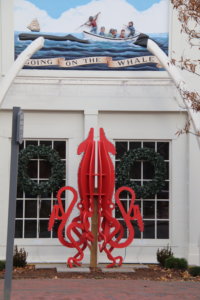 Located at 13 Broad Street, the museum is open Monday- Saturday, 10 am-4pm from February 1st to May 27th and open daily from 10 am to 5 pm May 28th to September 11th. Admission is free for February 2022 while the museum is being updated! Beyond that, admission is $20 for adults, $18 for Seniors (65+), $5 for Youth and Students (6-17), and free for visitors under age 6. Your ticket is also good for admission to a few other historical sites around the island! Be sure to plan a visit to the Nantucket Whaling Museum to learn more about the industry and leviathans that put Nantucket on the map.
Located at 13 Broad Street, the museum is open Monday- Saturday, 10 am-4pm from February 1st to May 27th and open daily from 10 am to 5 pm May 28th to September 11th. Admission is free for February 2022 while the museum is being updated! Beyond that, admission is $20 for adults, $18 for Seniors (65+), $5 for Youth and Students (6-17), and free for visitors under age 6. Your ticket is also good for admission to a few other historical sites around the island! Be sure to plan a visit to the Nantucket Whaling Museum to learn more about the industry and leviathans that put Nantucket on the map.
Current and Upcoming Exhibits at the Nantucket Whaling Museum
In addition to the permanent exhibits, the museum features new and rotating exhibits. Current and upcoming exhibits include the Student Art Showcase, running from February 21st to April 2nd 2022, Asian Treasures from the Billings Collection from May 28th- November 1st 2022, The Road from Abolition to Suffrage until March 18th, 2022. Additional exhibits include Spirits Within Us, the Discovery Center, the Decorative Arts Gallery, Whales Ecology, Neptune’s Grotto, and the Nantucket Town Clock.







